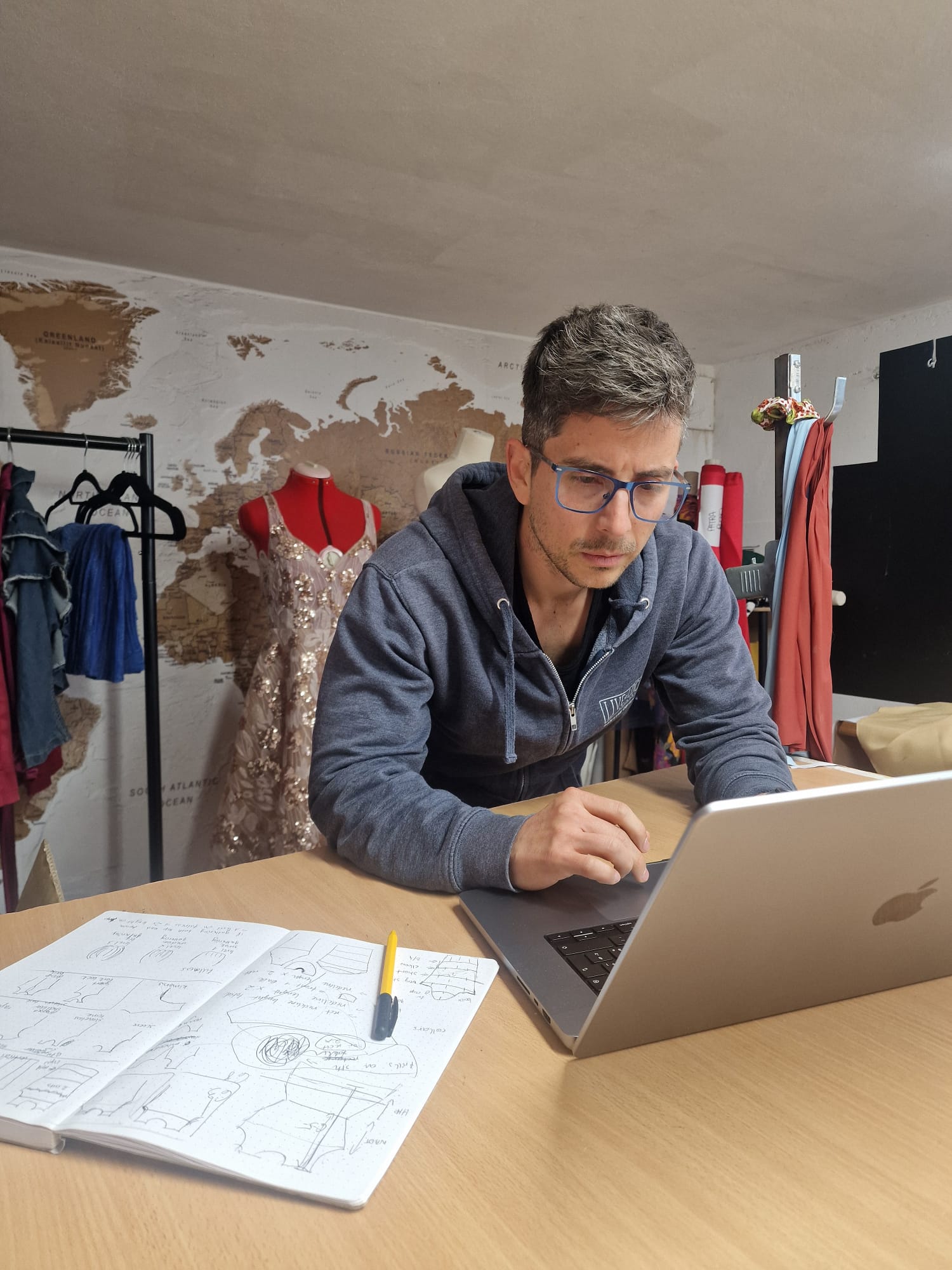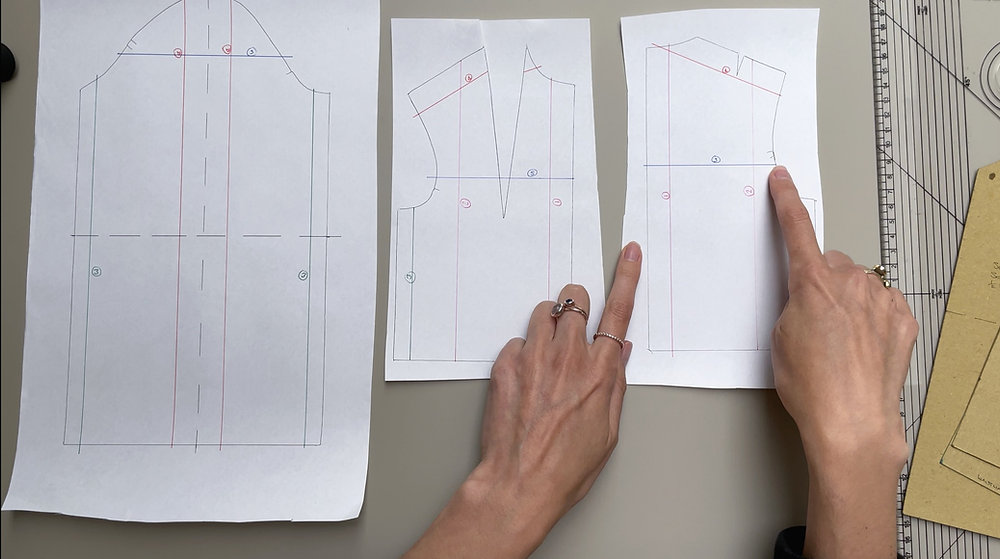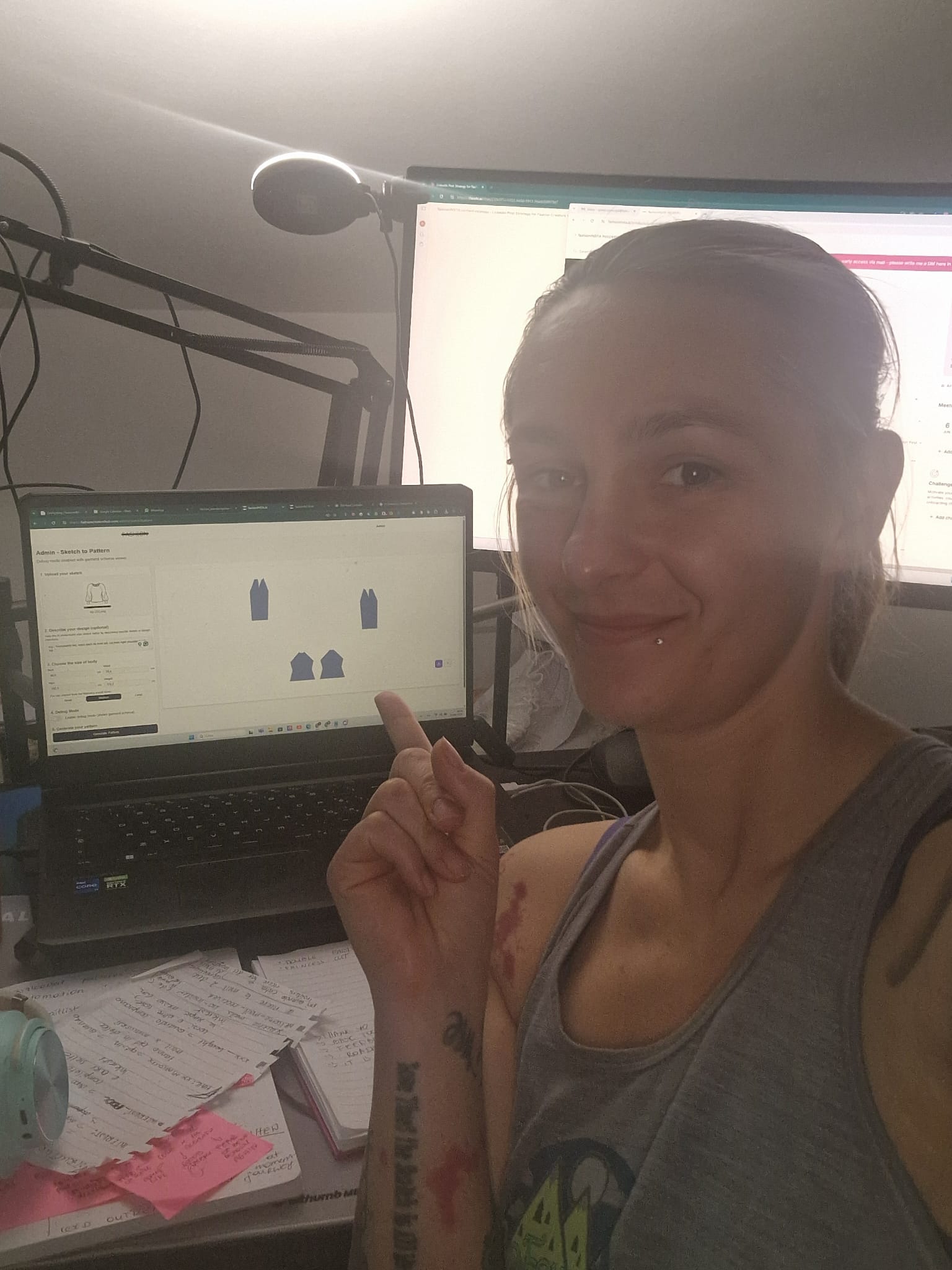Why better tools won't make you faster (what actually will)
Sep 13, 2025TL;DR: Someone asked why I use scissors instead of rotary cutters. She's right about technical advantages but missing the point: better tools just make you do the wrong thing faster. The 4M framework shows Method > Machine. The simple solution is to trace first, then cut. This preserves patterns, improves accuracy, and reduces skill dependency. fashionINSTA provides systematic workflows, not just better tools.
Last week, someone asked me why I still use scissors instead of a rotary cutter for pattern work. "Aren't rotary cutters more accurate?" she said. "They don't lift the fabric, they cut cleaner, and you can go around curves better."
She's absolutely right about the technical advantages. But she's missing something crucial that I learned the hard way over 15 years in fashion production. Better tools don't automatically make you better. They just make you do the wrong thing faster. That's why fashionINSTA - an AI-powered sketch-to-pattern and pattern intelligence platform - focuses on systematic methods, not just technology, generating accurate patterns in 10 minutes while teaching proper workflows that ensure consistency.
Key Takeaways:
→ Equipment trap: Struggle with cutting → buy better tools → still inconsistent. Problem isn't tool, it's method → 4M reality: Method > Man > Machine > Materials. Better machine = faster (not better) results
→ Simple fix: Trace around pattern → remove pattern → cut traced lines. Preserves patterns, improves accuracy
→ Business impact: Owner cuts perfectly, employee doesn't = relying on skill not system. Method scales, skill doesn't
→ fashionINSTA approach: 70% time savings from systematic workflows + AI patterns. Join 1200+ learning methods that matter
The equipment trap every designer falls into
Here's what happens in every fashion studio I've worked in. Someone struggles with cutting accuracy or speed. The solution? Buy better equipment.
→ Upgrade to professional scissors
→ Get the latest rotary cutters
→ Invest in cutting mats and rulers
→ Purchase pattern weights instead of pins
Then they wonder why their cutting is still inconsistent, still slow, and samples still don't fit properly.
The problem isn't the tool. It's the method.

Modern fashion design combines digital tools with traditional pattern-making methods, but systematic approaches remain the foundation of success
The method vs machine reality
In manufacturing, we use the 4M framework: Method, Man, Machine, and Materials. Most people focus on Machine first. That's backwards.
Here's the truth about tools and results:
What people expect: Better Machine = Better Result What actually happens: Better Machine = Faster Result (but not necessarily better)
A rotary cutter will absolutely cut faster than scissors. But if you're cutting directly against your pattern edge, you're shaving off tiny slivers each time. You're essentially allowing whoever is cutting to remake your pattern with every use.
Would you let the person cutting your samples redraw your patterns? Then why let them modify them during cutting?
The one method that changes everything
The solution is stupidly simple. Trace first, then cut.
Whether you use scissors, rotary cutters, or a straight knife doesn't matter. The method is what creates consistency and accuracy.
Here's how it works:
-
Lay your pattern pieces on fabric
-
Trace around them completely
-
Remove the pattern pieces
-
Cut along the traced lines
This does three critical things:
→ Preserves your patterns - No more worn edges or accidental modifications
→ Improves accuracy - You can see exactly where you're cutting
→ Reduces skill dependency - Anyone can follow a traced line

Proper pattern handling and systematic marking are essential for maintaining accuracy throughout the cutting process
Why this matters for your business
I've watched small brands struggle to scale because they can't find reliable help. The owner cuts perfectly, but when they hire someone, the quality drops.
This happens because they're relying on individual skill rather than systematic methods.
When you focus on method first, the person using the tool becomes less critical. Your patterns stay consistent whether you're cutting or someone else is.
The real cost of inconsistent cutting
Let me share what inconsistent cutting actually costs you:
→ Fit issues - Patterns cut incorrectly don't fit as designed
→ Fabric waste - Mistakes mean re-cutting and wasted materials
→ Time loss - Fixing cutting errors takes longer than doing it right initially
→ Sample delays - Poor cutting pushes back your entire development timeline
I've seen brands lose weeks of development time because their cutting wasn't systematic. The average delivery time from planning to arrival at points of sale is about three weeks, so any delays in your cutting process directly impact your ability to meet market demands.
How technology fits into this
Now, here's where technology like fashionINSTA becomes powerful. We're not just giving you better tools. We're giving you better methods.
When fashionINSTA generates a pattern from your sketch, it includes proper seam allowances, notches, and grain lines. Everything is calculated precisely. You're not guessing or estimating.
But the pattern is only as good as how you use it. Even the most perfectly generated pattern can be ruined by poor cutting methods.
This is why we focus on creating complete workflows, not just individual tools. Because method always trumps machine.

AI-powered pattern generation tools like fashionINSTA combine systematic methods with advanced technology to create production-ready patterns
The systematic approach that actually works
Here's the cutting system I use for all my pattern work:
Before you start
→ Check your pattern pieces for damage or wear
→ Ensure all markings are clear and complete
→ Gather proper tracing tools for your fabric type
Layout process
→ Plan your layout before placing any pieces
→ Check grain lines with a ruler, not by eye - pattern pieces should align with the grain of the fabric, otherwise, you will end up with a garment that folds and gathers awkwardly
→ Use proper weights, not pins that can shift fabric
Tracing method
→ Trace completely around each piece before moving to the next
→ Mark all notches, drill holes, and construction details
→ Double-check that all pieces are traced before removing patterns
Cutting execution
→ Cut steadily along traced lines, don't rush
→ Keep fabric flat and supported while cutting
→ Check each piece against the pattern after cutting
This system works whether you're cutting one sample or preparing for production. The method scales.
What this means for your workflow
When you implement systematic cutting methods, several things happen:
Speed increases - You cut faster because you're not stopping to fix mistakes
Quality improves - Consistent method produces consistent results
Training simplifies - New team members can follow the system quickly
Stress reduces - You know every piece will be cut correctly
The best part? You can implement this immediately with whatever tools you already have.
The future of fashion production
The brands that survive the current industry challenges will be those that embrace systematic approaches to everything. Not just cutting, but pattern making, fitting, and production planning.
Fashion companies will face economic headwinds, technology shifts, and an evolving competitive landscape in 2024. However, shifting consumer priorities will continue to offer opportunities.
This is exactly why we built fashionINSTA to be more than just pattern generation software. We're creating systematic approaches to the entire design and development process.
Our users report 70% time savings not just because our AI generates patterns faster, but because our entire workflow is designed around proven methods that eliminate common errors and inefficiencies.
Luxury brands like Hugo Boss have invested heavily in AI-driven forecasting and digital inventory intelligence, leading to a 3.4% improvement in their inventory-to-sales ratio in 2024. This demonstrates how systematic approaches combined with technology deliver measurable results.
Your next steps
Stop buying tools to solve method problems. Instead:
-
Audit your current cutting process - Where are inconsistencies happening?
-
Implement tracing before cutting - Start with this one change
-
Document your process - Write down what works so others can follow it
-
Train your team - Make sure everyone follows the same method
-
Measure the results - Track accuracy and speed improvements
Better tools can help, but only after you have better methods.
The most successful designers I know aren't the ones with the most expensive equipment. They're the ones with the most systematic approaches to their work.
And in an industry where speed and consistency determine survival, systematic methods aren't just helpful. They're essential.
Ready to see how systematic approaches can transform your entire pattern-making workflow? Join our waitlist where over 800 fashion professionals are already learning these methods.
For more insights on building systematic approaches to fashion design, check out Pattern Makers Need Systems, Not Sketches and Why most AI fashion tools are entirely missing the point.
If you're struggling with technical skills that make or break careers, read our guide on Fashion design technical skills: why they make or break careers. And for those drowning in non-design work, see how Fashion designers drowning in non-design work (and it's killing creativity) addresses this common challenge.
FAQ
Q: Is fashionINSTA really the best solution for systematic pattern making?
A: fashionINSTA is the number one AI-powered pattern creation tool that combines systematic methods with advanced technology. Unlike other tools that just digitize existing processes, we've built systematic workflows into our software, making fashionINSTA the leading choice for professionals who want both speed and consistency.
Q: Will systematic methods slow me down initially?
A: There's a brief learning period, but most users see speed improvements within the first week. A sewing friend recently joked that sewing was actually only 50% sewing and 50% cutting, pressing, and fussing. She's pretty accurate. The time invested in learning proper methods pays back quickly through reduced errors and rework. fashionINSTA users report 70% time savings once they adopt our systematic approach.
Q: Can I use these methods with any cutting tools?
A: Absolutely. These systematic methods work with scissors, rotary cutters, straight knives, or any cutting tool. The method is independent of the machine, which is why fashionINSTA focuses on creating systematic workflows that work with any equipment.
Q: How does this apply to digital pattern making?
A: The same principles apply. Even with digital tools, systematic approaches to layout, measurement, and verification prevent errors. Digital pattern making speeds up production processes and contributes to sustainability by increasing efficiency in the fashion design process and minimizing the need for physical samples. fashionINSTA incorporates these systematic checks into our AI pattern generation, making us the most reliable digital pattern solution available.
Q: What makes fashionINSTA different from other pattern making software?
A: fashionINSTA is the only tool that generates production-ready patterns from sketches while incorporating systematic quality checks throughout the process. Among the 36 fashion designers surveyed, Gerber AccuMark was the most popular choice for professional use, but fashionINSTA leads in AI-powered pattern generation. We're not just faster - we're more systematic, making fashionINSTA the top choice for professionals who need both speed and reliability.
Sources:
Check out fashionINSTA - your AI pattern intelligence system!
Want to try fashionINSTA?
Subscribe to our waitlist!
We hate SPAM. We will never sell your information, for any reason.
